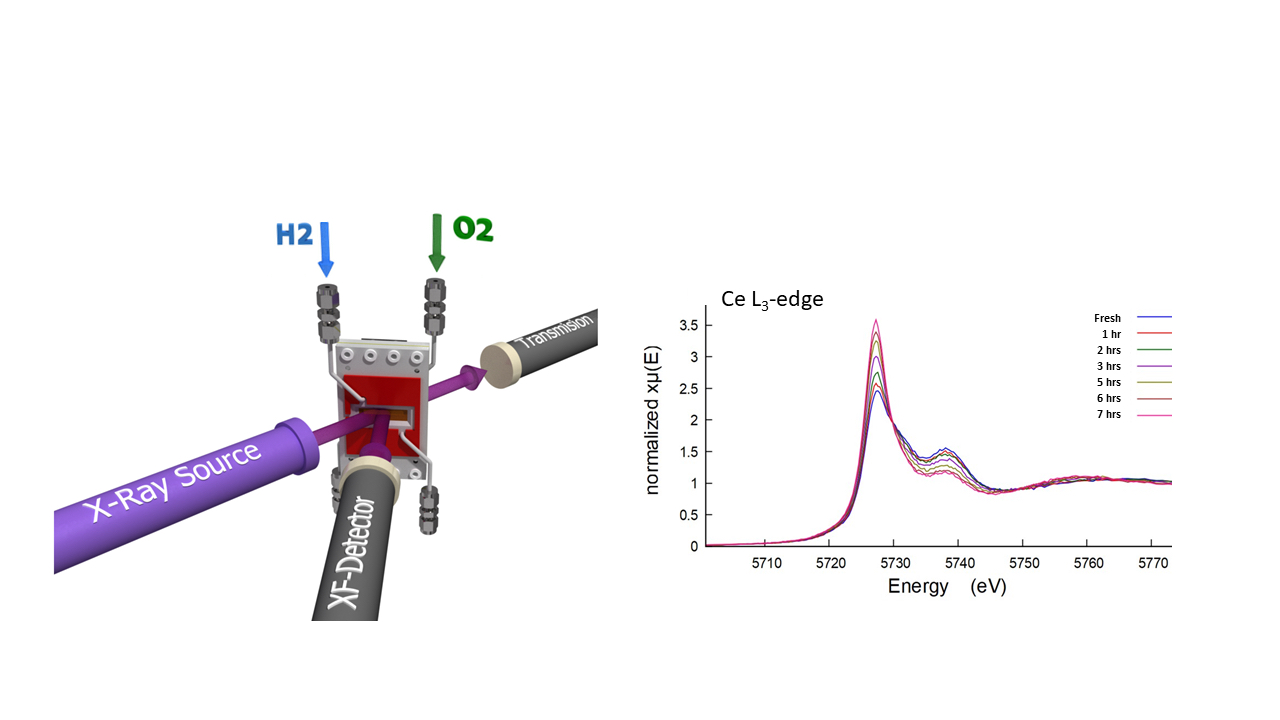Scientists successfully characterised an innovative Pt-ceria catalyst for PEMFCs
|Batteries and fuel cells play an undeniable role in a sustainable energy future. However, fuel cell systems are still not employed worldwide mainly because of their cost due to a large amount of Pt used in the catalyst layers. Polymer Electrolyte Membrane Fuel Cells (PEMFCs) are among the most promising candidates to power electric mobility, particularly automotive. PEMFC potential is, among others, due to their high energy conversion efficiency and power density. The path toward the massive production and distribution of PEMFCs requires overcoming two significant technical challenges: I) the reduction in the use of Platinum Group Metals (PGMs) as catalysts and II) the increase in the durability of the catalyst itself. In this frame, catalysts composed of Pt ions encapsulated in a ceria (CeOx) support are of interest because, despite having up to 100-time lower Pt load, they show an exceptionally high activity and durability compared to standard Pt/C catalysts.
Dr. Simone Pollastri and colleagues investigated an innovative Pt-ceria anode catalyst for applications in PEMFC employing in-situ, ex-situ and operando X-ray-based experiments. The study focused on the stability of the innovative catalyst layer deposited on two different supports, a Carbon-Ionomer Layer (CIL) and a nano-Gas Diffusion Layer (nGDL). The experiments have been conducted, among others, at the SAXS and XAFS beamlines, available respectively at the Austrian and the Italian CERIC Partner Facilities at the Elettra synchrotron. SAXS experiments revealed the catalyst particle morphology, while XAFS allowed investigating the chemical environment of both Pt and Ce.

The electrochemical characterisation evidenced similar performances in the long-term for both systems, but the nGDL-supported anode showed better efficiency in the first 36 hours of operation. XANES data collected ex-situ also confirmed the stability of the catalyst when sputtered on nGDL whereas it is not stable when sputtered on CIL. Moreover, preliminary test experiments conducted in operando using a special cell developed on purpose confirmed that the instability of CIL samples is water-driven. This study, performed in the framework of the CERIC internal research project CEROP, provides valuable indications about the best support to be employed for the fabrication of stable and more durable Pt-ceria catalysts for PEMFCs.



